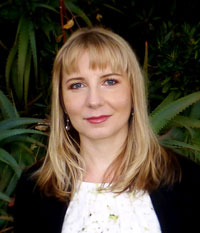The Underworld
string quartet (2015)
The idea of the piece came to my mind when I was reading Sarah Ruhl’s play Eurydice, a contemporary take on the myth of Orpheus from the perspective of Eurydice, his wife. While the play starts in New York City of 1950s, the rest of the story takes place in the timeless underworld and focuses on Eurydice's choice to return to earth with Orpheus or to stay with her father and marry the Lord of the Underworld.
Program Notes:
The idea of the piece came to my mind when I was reading Sarah Ruhl’s play Eurydice, a contemporary take on the myth of Orpheus from the perspective of Eurydice, his wife. While the play starts in New York City of 1950s, the rest of the story takes place in the timeless underworld and focuses on Eurydice's choice to return to earth with Orpheus or to stay with her father and marry the Lord of the Underworld.
While I was reading the play, certain visual images stroke me and I had an immediate response to them on a musical level. Thus, in one of the underworld scenes, Eurydice’s father (who she does not remember after being dipped in the waters of Styx), builds a room for her from a string. In my score, the unmeasured opening and closing sections with quietly sustained sonorities represent that process, and Eurydice’s seclusion from the rest of the underworld in that room.
The arrival of Orpheus and his attempts to bring Eurydice back (at letters F and L) are marked in my score with the use of re-arranged quotations of a motive from Orpheus’ aria "Che farò senza Euridice?” (“What will I do without Eurydice?”) from C.W. Gluck’s opera Orfeo ed Euridice. That motive is paired in letter L with a short original melody (first introduced in letter E and then brought back at letter I), which represents Eyridice’s lost soul.
While I was reading the play, certain visual images stroke me and I had an immediate response to them on a musical level. Thus, in one of the underworld scenes, Eurydice’s father (who she does not remember after being dipped in the waters of Styx), builds a room for her from a string. In my score, the unmeasured opening and closing sections with quietly sustained sonorities represent that process, and Eurydice’s seclusion from the rest of the underworld in that room.
The arrival of Orpheus and his attempts to bring Eurydice back (at letters F and L) are marked in my score with the use of re-arranged quotations of a motive from Orpheus’ aria "Che farò senza Euridice?” (“What will I do without Eurydice?”) from C.W. Gluck’s opera Orfeo ed Euridice. That motive is paired in letter L with a short original melody (first introduced in letter E and then brought back at letter I), which represents Eyridice’s lost soul.
- Instrumentation
- string quartet (2 violins, viola, cello)
- Movements
- 1
- Duration
- c. 9 minutes
- Premiere
- 2015 Moscow Autumn Festival
- Score Sample
Performances:
February 20th, 2019
The Underworld, string quartet (2015) - Fresno Philharmonic soloists
Ellipse Gallery - Henry Madden Library (Fresno, CA)
This performance is a part of "Proxima: Music for the Next Century" series.
U.S. Premiere
September 7th, 2016
The Underworld, string quartet (2015) - Principal Players of the Riverside County Philharmonic
The Box Theater (Riverside, CA)
World Premiere of a new work for string quartet
November 18th, 2015
The Underworld, string quartet (2015) - fx quartet
Moscow House of Composers (Moscow, Russia)
This performance is a part of the 37th Moscow Autumn International Festival of Contemporary Music.

 Home
Home News
News Performances
Performances Works
Works CV & Bio
CV & Bio Scores
Scores CDs
CDs Photos
Photos Newsletter
Newsletter Contact
Contact
